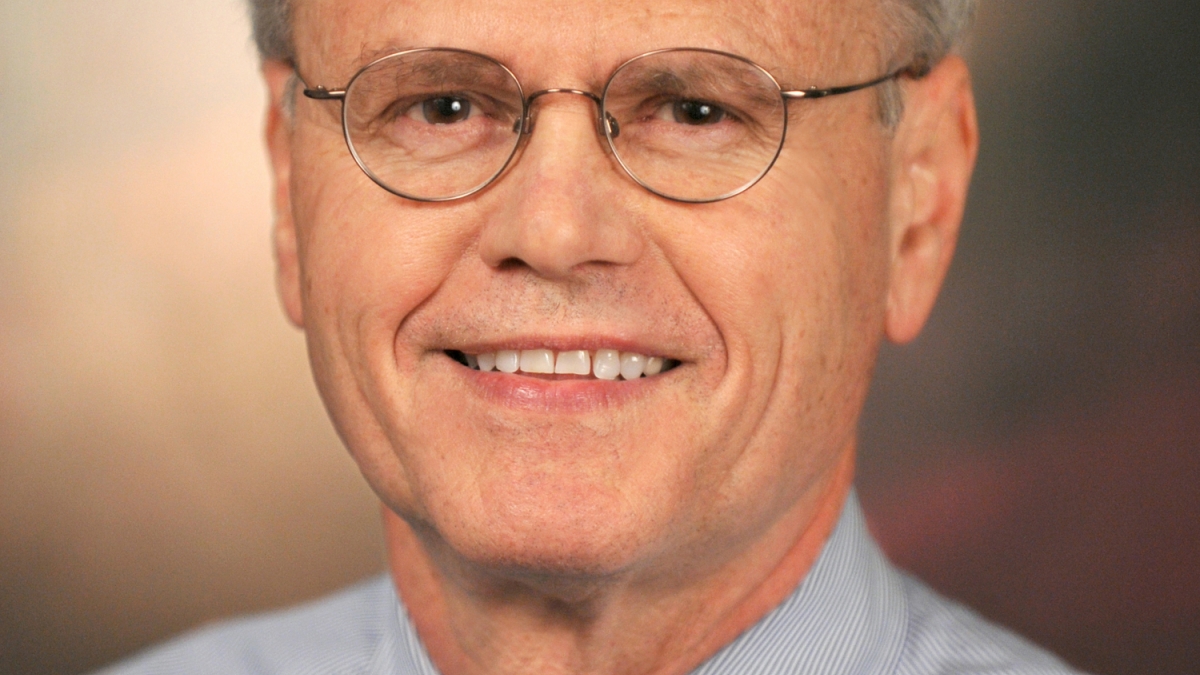Penn State dean returns to ASU Cronkite School faculty

Doug Anderson, who led Penn State’s College of Communications as dean for the past 15 years, is returning to Arizona State University, where he built the foundation for the Walter Cronkite School of Journalism and Mass Communication.
Anderson, who served as director of the Cronkite School from 1987-1999, is returning to ASU next month as a senior research professor, focusing on a variety of leadership, teaching and research initiatives. Anderson retired last month as dean at Penn State.
At the Cronkite School, Anderson took a little-known program and put it on the national journalism education map. Under his leadership, the Cronkite School secured one of the earliest endowed chairs awarded by the John S. and James L. Knight Foundation, establishing a permanent faculty position specializing in the then-new area of data journalism. The $1.5 million grant was at the time the school’s largest gift.
Anderson was also instrumental in launching a student-produced television newscast, a hall of fame honoring outstanding graduates, summer residential programs for high school journalists and the Hearst Visiting Professionals program.
The Cronkite School also became highly competitive in the Hearst Journalism Awards under Anderson. The school won the Hearst intercollegiate writing competition for the first time in 1990, and captured first in intercollegiate broadcasting in 1991. The school won the overall Hearst competition for the first time in 1994, and again two years later.
In 1996, Anderson was named Journalism Administrator of the Year by the Freedom Forum – the youngest person ever to win the award.
“Doug Anderson laid the groundwork for so much of the success we are experiencing today,” said Christopher Callahan, Cronkite School dean and university vice provost. “Quite simply, we would not be where we are today without Doug’s leadership, passion and vision. We are thrilled to welcome him back home.”
Anderson, who also served as the Cronkite Endowment Board of Trustees Professor, was a popular faculty member among students. Many of his former pupils have gone on to successful careers in journalism and beyond.
“Doug Anderson had a profound effect on my life and the lives of countless students at ASU,” said Jay Heiler, a 1983 Cronkite School graduate who currently serves on the Arizona Board of Regents. “He combined intellectual excellence in his discipline with a great teacher’s love of students and dedicated regard for their futures. He created the Cronkite School, and his return to ASU is a wonderful thing.”
At Penn State, Anderson dramatically increased the student body; more than doubled the number of annual internships; had the highest graduation rates at the university; created four new centers; more than tripled the school’s endowment and annual scholarships; built new broadcast studios and newsrooms; and nearly doubled the numbers of students of color.
Last year, Penn State won the Equity and Diversity Award from the Association for Education in Journalism and Mass Communication (AEJMC). The college has won the overall Hearst Journalism Awards competition for three consecutive years. And last year, Anderson was recognized with the prestigious AEJMC Presidential Award for his “outstanding service to journalism and mass communication.”
Anderson has served as chairman of the Accrediting Committee of the Accrediting Council on Education in Journalism and Mass Communications, president of the Association of Schools of Journalism and Mass Communication and chairman of the Hearst Awards Steering Committee.
“I felt privileged to serve Penn State for 15 years, just as I feel privileged to once again be part of the Cronkite School,” Anderson said. “Because of Chris Callahan's strategic leadership, energy and drive, Cronkite has soared to previously unimaginable heights, and it continues to open new frontiers. I am looking forward to playing a small role on the Cronkite team.”
Anderson started his career in newspapers, serving as reporter, sports editor and managing editor. He is the author or co-author of six books, including “Contemporary Sports Reporting” and “News Writing and Reporting for Today’s Media.” He has also published more than 75 academic articles, book chapters and workbooks.